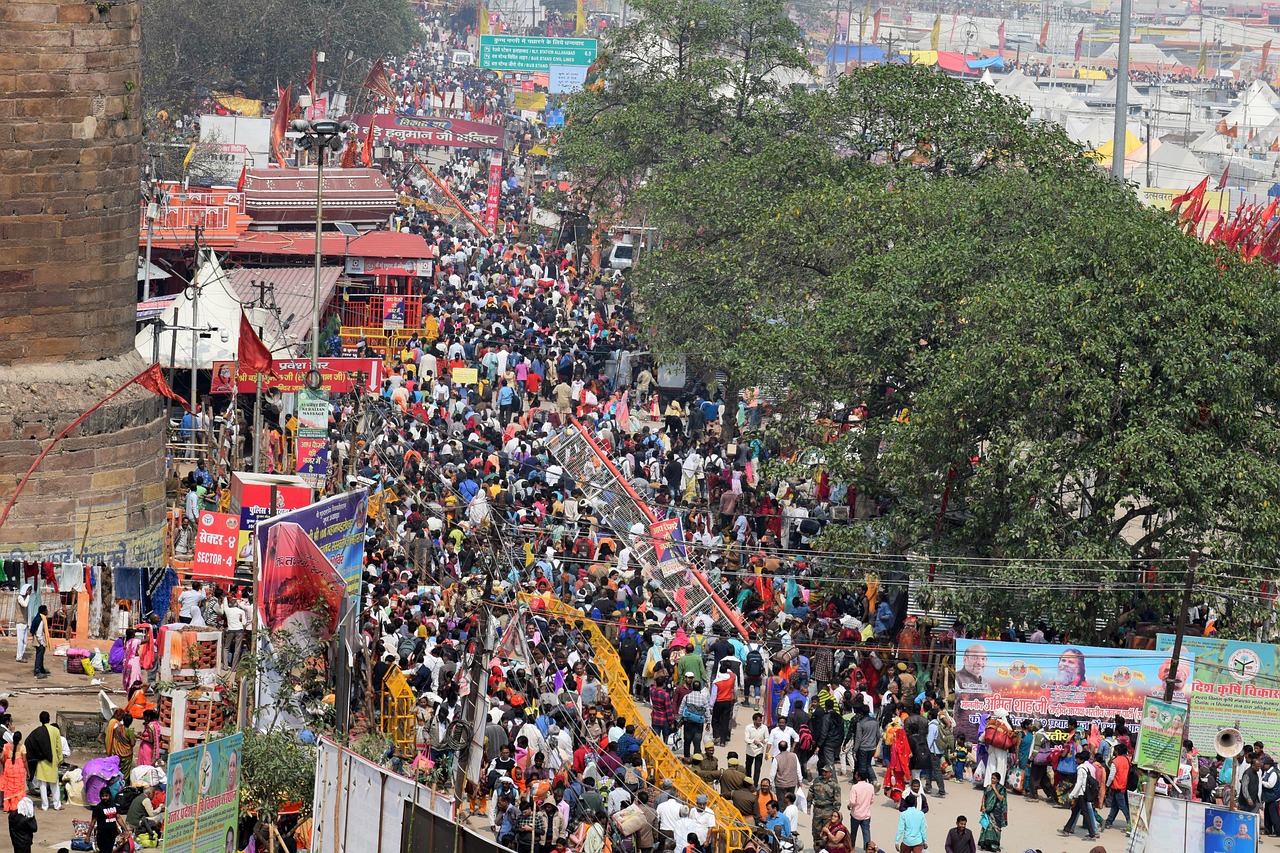The History and Significance of the Kumbha Mela: A Cultural and Religious Celebration

The Kumbha Mela is a massive cultural and religious celebration that takes place in India every few years. It is one of the oldest and largest gatherings in the world, attracting millions of people from all walks of life. The event is steeped in tradition and has a rich history that dates back thousands of years.
In this article, we will explore the origins and significance of the Kumbha Mela. We’ll delve into the history of the event and how it has evolved over time, as well as its cultural and religious significance. Whether you’re a seasoned pilgrim or simply curious about this unique celebration, there’s something here for everyone.
Origins of the Kumbha Mela
The Kumbha Mela has its roots in Hindu mythology. According to legend, the gods and demons fought over a pot of amrita, the nectar of immortality. As they struggled, drops of the nectar fell to earth at four different locations: Haridwar, Prayagraj, Nashik, and Ujjain. These locations became known as the “four kumbhas” and are the sites where the Kumbha Mela is held.
The first recorded Kumbha Mela took place in Prayagraj in the year AD 951. Since then, the event has been held every three years at each of the four kumbhas in a rotating pattern. The Kumbha Mela at Prayagraj is the largest and most significant of these events, attracting millions of people from all over the world.
The Meaning and Significance of the Kumbha Mela
The Kumbha Mela is more than just a cultural and religious celebration. It is also a spiritual journey for many of the people who attend. Pilgrims come to the Kumbha Mela to bathe in the sacred waters of the Ganges, which is believed to purify the soul and wash away sins. They also come to seek blessings from holy men and women, participate in religious rituals and ceremonies, and seek enlightenment.
The Kumbha Mela is a celebration of unity and inclusivity. People of all castes, creeds, and religions are welcome to participate in the event. It is a time for people to come together and share in the joy and spiritual growth that the Kumbha Mela has to offer.
Evolution of the Kumbha Mela
Over the centuries, the Kumbha Mela has evolved and changed in many ways. One of the most significant changes has been the increase in the size and scope of the event. What was once a relatively small gathering of holy men and women has now become a massive celebration that attracts millions of people from all over the world.
Another change has been the increasing involvement of the government and other organizations in the planning and management of the Kumbha Mela. In the past, the event was largely organized by religious leaders and the local community. Today, it is a massive undertaking that requires the coordination of multiple government agencies and other organizations.
The Modern Kumbha Mela
The Kumbha Mela of today is a far cry from the small, informal gathering that it once was. It is now a massive event that requires extensive planning and resources. The most recent Kumbha Mela, which took place in Prayagraj in 2019, attracted an estimated 150 million people over the course of the 55-day event.
The modern Kumbha Mela is a showcase of India’s cultural and religious diversity, with people from all corners of the country and beyond coming together to participate in the event. It is also a major tourist attraction, with many visitors coming from overseas to experience the unique atmosphere and participate in the festivities.
The Kumbha Mela has also embraced modern technology in many ways. Many pilgrims use social media and other online platforms to connect with each other and share their experiences. The event is also covered extensively by the media, with news organizations from around the world sending reporters to cover the festivities.
Despite these changes, the Kumbha Mela has remained true to its roots and continues to be a deeply spiritual and meaningful event for many people. It is a celebration of unity, inclusivity, and the search for enlightenment that has brought people together for centuries.
The Kumbha Mela is a rich and complex cultural and religious celebration that has evolved over time. From its humble beginnings as a small gathering of holy men and women to the massive event it is today, the Kumbha Mela has remained a powerful force in the lives of many people. Whether you’re a seasoned pilgrim or simply curious about this unique event, there’s no denying the significance and meaning of the Kumbha Mela.





